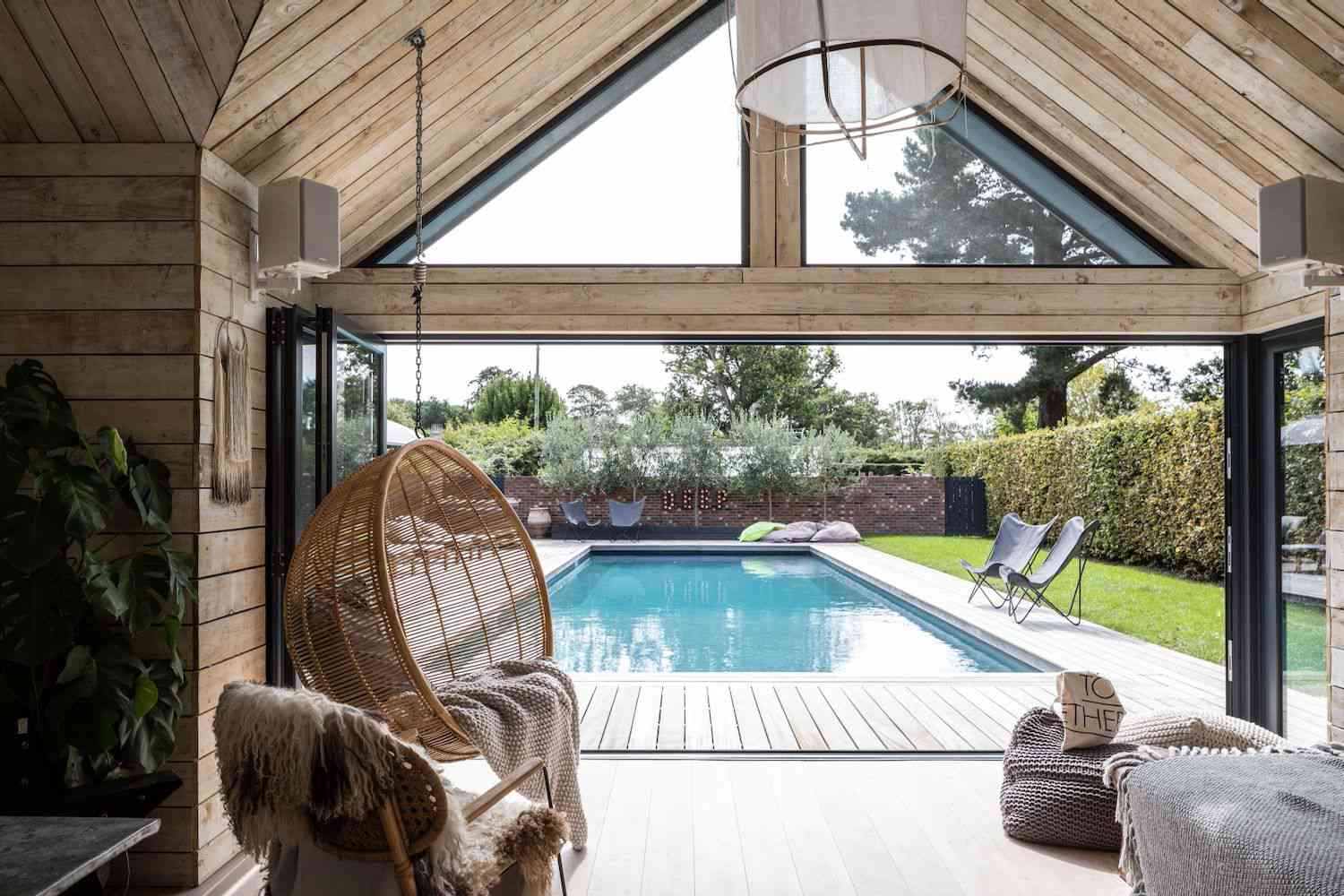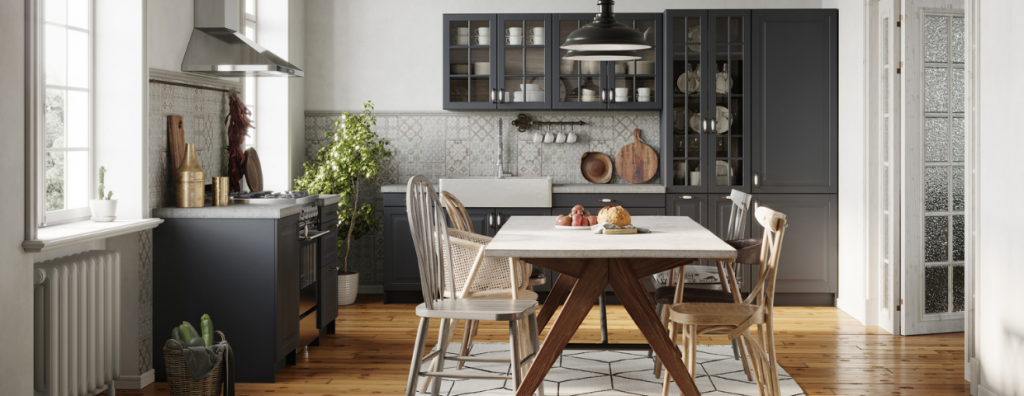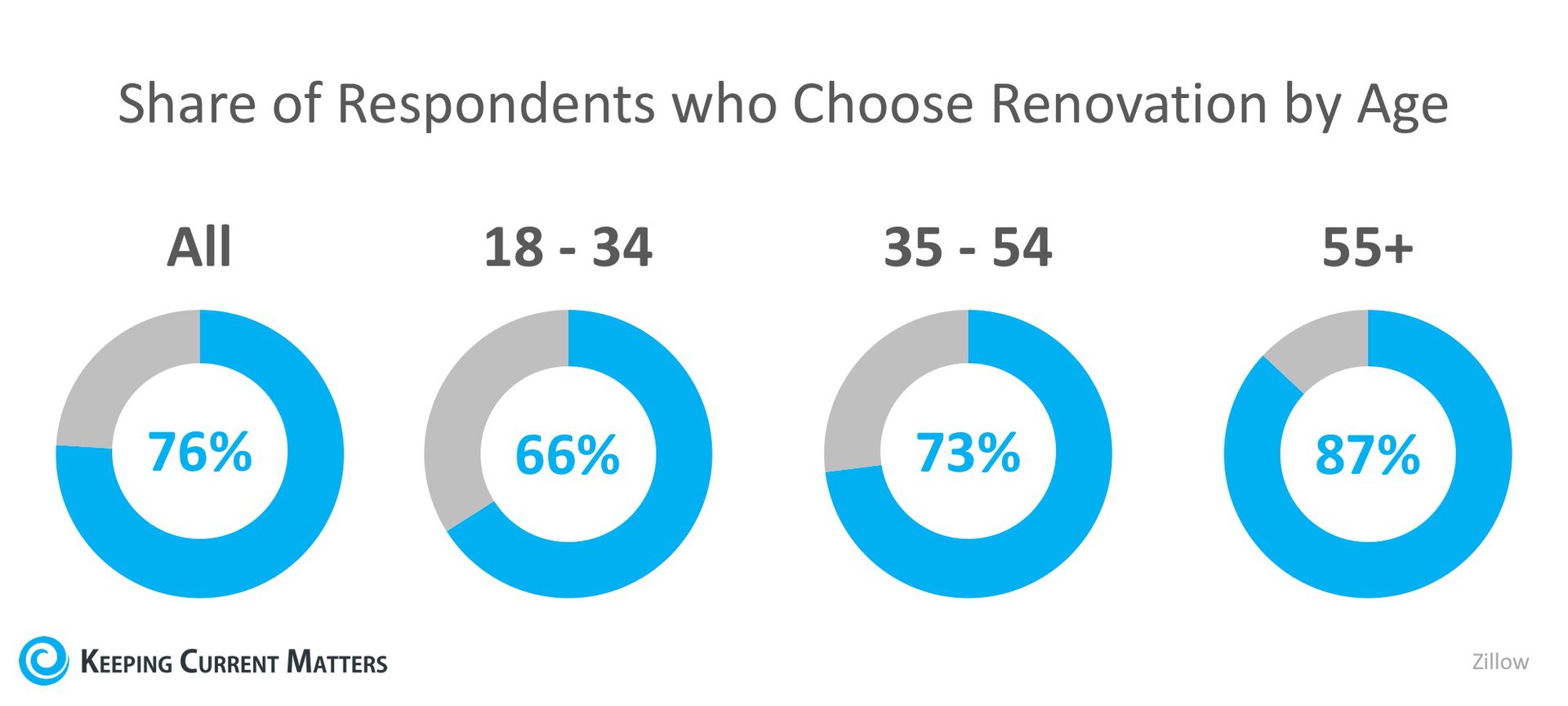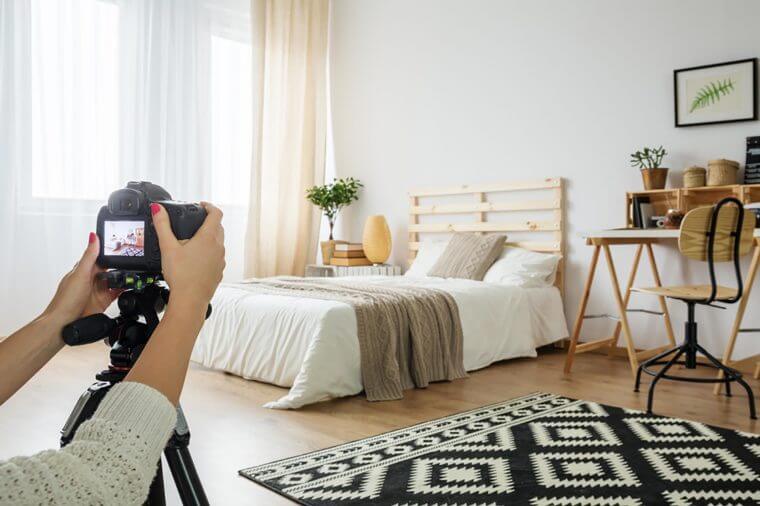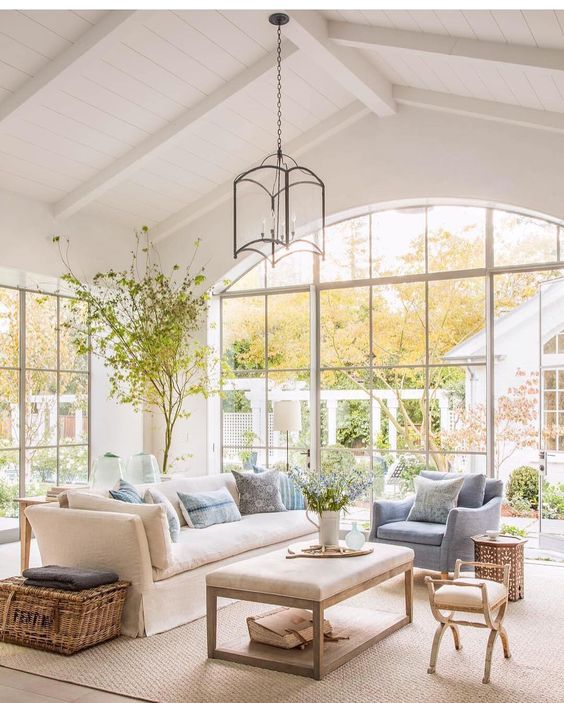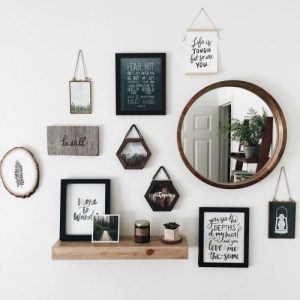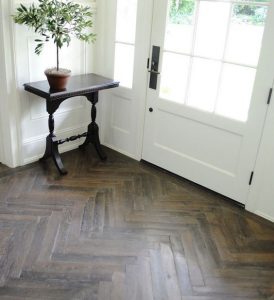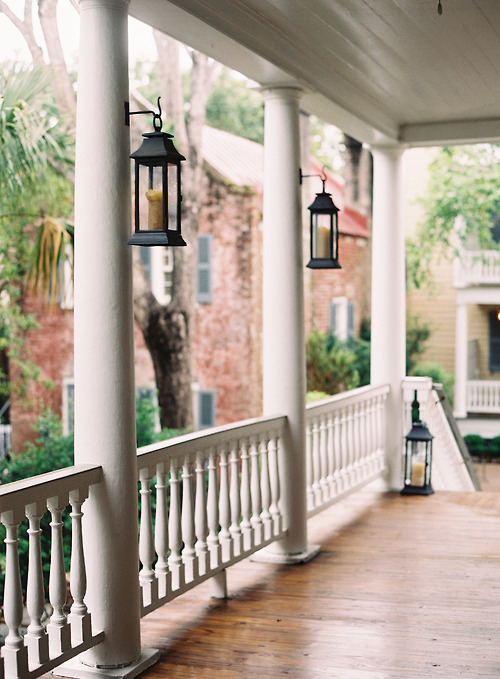How to Improve Your Home’s Value
If you are looking to increase the value of your home to sell, or are just looking to make some upgrades you will need to know the improvements that will hold their value.
Many of the tips are DIY, while others require some professional assistance. But whichever route you decide to go, select the options that make the most sense for you and your home. Last thing you want is to spend more on improvements than you will get back when you sell.
Below you will find some of the most cost-effective things you can do to improve your home’s value, while also ensuring a healthy return on your investment.
1. Increase Useable Square Footage
Adding to the square footage of your home is another way to increase your value, although consulting with a professional will ensure you make the right addition and yield the best return on your investment. When real estate agents and prospective buyers pull comps (comparable sales) to see if the home’s value aligns with the asking price, this is a significant factor.
Here are options to consider:
- Accessory dwelling unit: This could be an additional living space on your property, such as a garage or shed that has been converted into a guest living quarters, an additional room for a large family, an office or a rental unit.
- Finished basement: Turning your basement into finished habitable living space for guests, as a recreational room, gym or office can significantly boost value and eye-appeal for prospective buyers.
- Finished attic: Just like the basement, turning your attic into a habitable space can increase your home’s value.
- Bedroom addition: The more bedrooms you have, the higher the price of the house. Depending on how much space you have to work with, add another room or rooms to match preferences and trends in your local housing market.
- Bathroom addition: Likewise, the more bathrooms, the greater the property’s appeal, especially for families. An additional bathroom or half-bath is worth it, particularly if you only have one bathroom.
2. Small Changes Can Add Up to a Big Difference
The little things matter. Compared to remodeling your kitchen or installing hardwood floors, it’s relatively inexpensive to:
- Add a new coat of paint or change loud paint colors
- Stain your deck, fence, cabinets, or any other area where wood is looking worn
- Update dated light fixtures, knobs, ceiling fans, and hooks
- Plant a tree or some flowers near the walkway to the house
- A new mailbox is inviting and feels homey
3. Improve Your Outdoor Space
When people talk about adding value to your home, you often hear curb appeal, but don’t forget the backyard (or the sides). Your property is another opportunity to expand its living space. Adding a deck or patio, with room for seating and a built-in or freestanding grill, is a way to create a defined space for outdoor living on a large or small scale.
But whatever you do, really weigh the pros and cons before you add expensive features like a swimming pool. While buyers in some markets see pools as a major plus, others do not want the added expense, ongoing maintenance, or potential liability.
4. Update the Bathrooms
Bathrooms are one of the most critical rooms in a home. If your bathroom is over 10 years old, a facelift is necessary if you want to make your home more attractive to prospective buyers, or sell it at a higher price.
Upgrades like a fresh coat of paint; replacing the cabinets, faucets, showerheads and countertop; or installing a new sink or tiles can go a long way. Many of these ideas, you can also do yourself for a few hundred dollars.
5. Remodel Your Kitchen
Many buyers narrow in on the kitchen as the central feature of a home, so if yours is outdated, it can ultimately affect how much you garner from a sale. If updating your entire kitchen is too big of an undertaking, a minor remodel could still have an impact on your home’s value — think coordinating appliances and installing modern hardware on your cabinets. Talk with a real estate agent about what makes the most sense and what will command the most dollars from prospective buyers.
Before embarking on a kitchen remodelling project, speak to an interior design or real estate professional to understand what features will help your house sell or enhance its value. They will also be able to tell you the types of kitchen trends that customers prefer now, and are willing to pay more for. That way you can avoid wasting your money.
6. Do a Deep Cleaning
It should go without saying, but you can increase the value of your home with only a little elbow grease plus the cost of some sponges, gloves, and cleaner. And now more than ever, homebuyers want a home that feels clean and safe.
Move furniture and appliances. Take out personal items and clean out drawers.
7. Making the Home Energy Efficient
Lowering your home's energy costs will save you money for as long as you live there and is expected to be a major selling point down the line. Indeed, "energy-efficient" was second only to "safe community" on the list of attributes that would most influence a purchase decision.
Things That Do Not Actually Increase Value
Before we dive into how to improve home value, it’s important to be aware of some myths about what increases home value, so you can avoid spending too much on upgrades that don’t typically boost home value.
These home value improvement myths include:
- over the top landscaping
- water features
- bridges
- pergolas
- fancy electrical wiring e.g. copper pipes
- swimming pools
- hot tubs
- saunas
- white appliances
- solar panels
Find the Right Agent
Home improvements that add value mean more money when you sell and more joy while you live in your home. When you understand how to increase the value of your home, you are setting yourself up for success now and in the future. Be sure to add unique touches to make your home feel cozy and welcoming. These steps will go a long way toward helping your home stand out from the crowd.
Windermere’s community of real estate professionals is our greatest asset. We have experts in all areas of real estate, from your typical starter home to condos, luxury properties, and new construction. While residential real estate is the mainstay of our business, Windermere also has offices and associates who specialize in property management, commercial real estate, and relocation services. To further facilitate the home buying process, Windermere has affiliated partners in certain regions to provide mortgage, title, and escrow services.
Call us today with any questions or concerns. Our professional Real Estate Agents will help you through this exciting process. (951) 369-8002
10 Mistakes to Avoid When Buying a Home
Whether you’re a first-time homebuyer or have purchased a home before, the same mistakes can rear their head at any point in the buying process. By working closely with your agent, you can identify these pitfalls ahead of time and adjust accordingly. Mistakes in the buying process can lead to higher costs, added stress, and even terminated contracts. Here are ten common mistakes to avoid when buying a home.
10 Mistakes to Avoid When Buying a Home
1. Not getting pre-approved
Getting pre-approved is a key component of the early stages of the buying process and will help to maximize your chances of getting your offer accepted. Getting pre-approved will give you a concrete idea of how much you can borrow, how much house you can afford, the estimated monthly costs of your mortgage and its corresponding interest rates. It also communicates to sellers that you are a serious buyer.
2. Not identifying your price range
Pursuing listings you can’t afford is a surefire way to start your home buying process off on the wrong foot. Buying a home that’s outside your budget will put added pressure on your finances and increases your chances of foreclosing, should your financial situation take a turn for the worse. Use the general rule that your house payment should never be more than 25-30% of your take-home pay, and as you prepare for talks with your lender be sure to account for all the expenses you will incur, including private mortgage insurance (PMI) if applicable.
3. Taking on new credit
Opening new lines of credit at any point in the home buying process will slow things down and can affect your chances of getting a home loan. Adding another credit card to your collection or taking out a loan will change your credit score, causing a ripple effect that can bring the buying process to a halt. Because new credit changes your debt-to-income ratio, lenders will likely want to review your mortgage approval and your risk of non-payment. This forces sellers to wait around for your application while competing buyers speed ahead of you in line.
4. Not purchasing adequate homeowner’s insurance
It’s understood that a home is a valuable asset that needs to be protected, but it is still all too common for homeowners to be under-insured. A homeowner’s insurance policy covers your home, your belongings, living expenses and injury or damage to others that occur on the property in the event of a disaster. Work closely with your insurance broker to make sure you have adequate coverage for the most common risks in your area like flood, earthquake, and more.
5. Not looking for other loans
With a little resourcefulness, you can tap into new sources of financial support that will help to ease the burden of making a home purchase. VA Loans can be a lifesaver for active service and veteran personnel, offering zero down payment and lower-than-average mortgage rates. Other government loan programs such as USDA and FHA loans can greatly aid homebuyers with favorable loan terms. Be sure to thoroughly review the qualifications of these loans before applying.
6. Misunderstanding the down payment
When it comes to down payments, it’s not twenty percent or bust. Granted, with a twenty percent down payment your lender won’t require you to purchase mortgage insurance; but even if you’re short, there are a number of alternatives to private mortgage insurance (PMI) available to you, such as Lender-Paid Mortgage Insurance and a piggyback loans strategy. Work with your agent to identify trusted lenders in their network that can help you secure the right loan.
7. Not working with a buyer’s agent
A buyer’s agent will help you to identify which homes you can afford, work with you on formulating a competitive offer and preparing for negotiations with sellers and listing agents. Buyer’s agents will also handle the paperwork when it comes time to close the deal. A home purchase is an intricate transaction with many moving parts and having an experienced professional by your side who can navigate each step is invaluable. Typically, the buyer’s agent splits the commission of the sale with the listing agent, which is paid by the seller, so generally their services come at no additional cost to you.
8. Underestimating repair and remodeling costs
Regardless of whether you’re buying a fixer-upper or a home that needs a few simple upgrades, you can usually expect some repair and remodeling expenses once the home is yours. Before you start swinging hammers or tearing up drywall, take time to assess the scope of the projects and whether you can do them yourself or need a professional. Talk with your agent about which remodeling projects have the highest resale value for comparable homes in your area.
9. Buying a home without an inspection
Buying a home without having it inspected opens the buyer up to added risk. Without a home inspection, you forego the ability to negotiate repairs and concessions with the seller. Getting a home inspection is a small investment and alerts you of any potential home disasters that may be on the horizon. However, this mistake comes with an aside. In a seller’s market where a high number of buyers are competing for a limited number of available listings, waiving the inspection contingency is a common tactic for buyers looking to make their offer stand out. Work with your agent to figure out what’s best for you and your situation.
10. Forgetting about moving costs
It’s easy to get so focused on the purchase of the home that you forget about what it will cost to move there. Moving expenses can add up quickly, especially if you’ll be traveling across state lines or across the country. If you’re buying and selling a home at the same time, there’s also the question of where you’ll live in between closing on your current home and closing on your new one. If these costs aren’t accounted for, you can quickly be over budget before you set foot in your new home.
For more information on how to make the buying process smoother, read about how you can Increase Your Buying Power.
Timeless Home Design
When decorating and designing, homeowners often strive for a home that may incorporate vintage and modern elements but remains timeless at its core. Fortunately, certain design principles and elements have stood the test the time and can help you curate the home you desire. Here is your guide to understanding how you can design a home that looks and feels timeless.
Principles of Timeless Home Design
Balance
When designing a space in your home, balance is a key concept to delivering a timeless ambiance. Achieved through a proportionate arrangement of objects and colors, balance will help create a logical pattern in your home that pleases the eye. Experiment with symmetry in your home to build balance. This doesn’t mean that there needs to be two of every object, rather in every space you should utilize the objects and color schemes present to create symmetry.
Focal Point
Imagine a living room without a couch or mantle, or a dining room without a dining table. These images are confusing because we simply don’t know where to focus our attention. A core principle of timeless design is that space should have a focal point to give order to the room. Focal points don’t always have to be derived from a built-in feature of the home, you can create one with furniture, artwork, or some other form of eye-catching décor.
Scale and Proportion
Scale and proportion are two fundamental concepts of interior design and are key to creating a timeless décor. Simply put, proportion refers to the relationship of items and colors, while scale refers to their relationship with the room. For example, if a room in your home has high ceilings, this allows for taller furniture and artwork, while the most spacious rooms in your house are the best home for large décor pieces and furnishings. Proper usage of scale and proportion also means leaving some space between items to let the room breathe, so to speak.
Colors and Patterns
For a timeless look and feel, choose more classic color and pattern schemes. Basketweave is a traditional pattern that helps to create symmetry. Stripes are always in style and can help to reinforce clean lines. Stick to neutral paint colors on your walls as they give you the flexibility to add décor without overwhelming the room. Combinations of off-whites, beiges, grays, and earthy tones will deliver that timeless feel you’re looking for.
Natural Elements
There’s nothing more timeless than nature. Materials like wood, stone, and marble have been a cornerstone of design since antiquity. Whether you utilize these materials in your home as furniture, accent pieces, or focal points, they will help create a trend-free, organic environment in any room.
Are Homeowners Renovating To Sell Or To Stay?
Over the past few years, two trends have emerged in the housing market:
- Home renovations have shot up
- Inventory of homes available for sale on the market has dropped
A ‘normal’ housing market is defined by having a 6-month supply of homes for sale. According to the latest Existing Home Sales Report from the National Association of Realtors, we are currently at a 4.4-month supply.
This low inventory environment has many current homeowners worried that they would be unable to find a home to buy if they were to list and sell their current houses, which is causing many homeowners to instead renovate their homes in an attempt to fit their needs.
According to Home Advisor, homeowners spent an average of $6,649 on home improvements over the last 12 months. If that number seems high, it also includes homeowners who recently bought fixer-uppers.
A new study from Zillow asked the question,
“Given a choice between spending a fixed amount of money on a down payment for a new home or fixing up their current home, what would you do?”
Seventy-six percent of those surveyed said that they would rather renovate their current homes than move. The results are broken down by generation below.
More and more studies are coming out about the intention that many Americans have to ‘age in place’ (or retire in the area in which they live). Among retirees, 91% would prefer to renovate than spend their available funds on a down payment on a new home.
If their current house fits their needs as far as space and accessibility are concerned, then a renovation could make sense. But if renovations will end up changing the identity of the home and impacting resale value, then the renovations may end up costing them more in the long run.
With home prices increasing steadily for the last 6.5 years, homeowners have naturally gained equity that they may not even be aware of. Listing your house for sale in this low-competition environment could net you more money than your renovations otherwise would.
If you are one of the many homeowners who is thinking about remodeling instead of selling, sit down with a local real estate professional who can help you make the right decision for you based on the demand for your house in today’s market.
Source: Keeping Current Matters
Selling A Home In Summer
There may be no better time to sell your home than in the summer months. Though spring is usually seen as one of the more brisk homebuying periods, for those selling a home in summer,there are great opportunities to be taken advantage of when the temperature rises.
Whether tax refunds have (finally) been processed, meaning homebuyers have access to capital, or inventory is low when compared to the amount of people buying — or simply the motivation of most homebuyers to lock in a property before school starts in the fall — summer home selling can be one of the most lucrative ventures of your financial life.
But this doesn’t mean one can simply rely on the power of real estate seasonality in the summer to do the heavy lifting or that listing a home in the so-called “best month to sell a home” will have offers rolling in from the get-go.
That’s because getting an offer when selling a home in summer is not the ultimate goal; getting an offer, at the best price possible, is.
To ensure your property gets discovered in a crowded, frantic — often profitable — market and to help you maximize top dollar for your home, here are three strategies to add to your home buyer to-do list.
1. Showcase The Exterior
There’s no question about it: sprucing up the exterior of a home can do wonders for both a property’s curb appeal, as well as its ability to attract home buyers. This is even more accurate during the busy summer selling season.
This is, essentially, for two reasons: One, the condition and presentation of a home’s exterior gives would-be homebuyers a snapshot of what the rest of the property is like. (Whether correct or not.) Two, summer is a time when outdoor living areas get their most use. Having a clearly-defined outdoor entertaining space can be a real boon to your selling efforts.
Here are a couple of tips to help you maximize the exterior of your house when showing it:
- Trim and manicure: Be sure to mow the lawn, trim the shrubs, and water the plants and lawn to give a vibrant, clean look. Also look at other outdoor areas, such as driveways and exterior doors, that might need a going-over to bring your exterior up to standard.
- Highlight outdoor living areas: Do you have an outdoor BBQ or pool or some kind of patio/deck on the premises? Stage them in a way that lets prospective homebuyers envision themselves making memories in this space.
- Add outdoor living area space: You may not have the time or budget for this, but if you do want to inject some profit potential into your property, adding something like a fire pit or revamped deck can often do wonders for your bottom line.
2. Keep Things Cool
With the sunshine and dry weather of summer also comes, depending on where you live, a fair amount of heat and humidity. It’s vitally important you keep your home as comfortable and inviting as possible for home buyers that come over for a viewing.
Often this means thinking about things from a home buyer perspective. What would make you comfortable if you had been traipsing around town all day, in the heat, looking at properties? A couple of things you might want to include:
- Keep the A/C running: Yes, air conditioning can run up the energy bill considerably, but when staging a property, it’s important to think about a return on your money and ensure your home is cool and comfortable. Will a couple hundred dollars spent now be worth thousands of dollars later in the form of an offer? That’s usually the case.
- But not too cold: You want your home to be cool and comfortable, not colder than the Arctic and having homebuyers reaching for the sweater. Find a middle ground and keep the thermostat set for a comfortable temperature.
- Have refreshments ready: A pitcher of iced tea and snacks isn’t just something for realtors to set out. As a seller having these “stand-bys” at the ready can make a great (and eventually lucrative) impression on homebuyers.
3. Price It Right
Many folks selling a home in summer believe, and rightfully so, that summer is a great time to sell a home. With many more buyers than the available inventory can support, they reason that listing their property with a high starting price (and wait for the negotiations to begin) is the best approach to selling a house.
Unfortunately, this ignores one of the cardinal rules of real estate: the longer a property sits on the market, the more buyers begin to “wonder” what’s wrong with it? Rightly or wrongly, buyers — and the agents that represent them — see listings that have been on the market for multiple months as flawed.
The key is to price your home right, from the beginning. (Your real estate agent can help you with this.) Don’t worry, in a competitive market — and with the right price — you’ll often get offers above the listing price. But this is impossible to do if you price yourself out of a market, from the beginning, in the hopes that you get that stratospheric amount you’ve been dreaming about.
Selling a home in summer can be one of the most satisfying, if not life-changing, things you can do. But it requires more than simply putting a “for sale” sign in the front yard and waiting for the offers to flood in.
It’s your job when selling your home in summer to ensure your property is clean, fresh, comfortable — and priced realistically — to ensure that home buyers can picture themselves living in your abode. Not focusing on what may or may not be wrong with your home.
Home Inspections: What To Expect
So you made an offer, it was accepted, and now your next task is to have the home inspected prior to closing. Oftentimes, agents make your offer contingent on a clean home inspection.
This contingency allows you to renegotiate the price you paid for the home, ask the sellers to cover repairs, or even, in some cases, walk away. Your agent can advise you on the best course of action once the report is filed.
How to Choose an Inspector
Your agent will most likely have a short list of inspectors that they have worked with in the past that they can recommend to you. Consider following these 5 areas when choosing the right home inspector for you:
- Qualifications – find out what’s included in your inspection and if the age or location of your home may warrant specific certifications or specialties.
- Sample Reports – ask for a sample inspection report so you can review how thoroughly they will be inspecting your dream home. The more detailed the report, the better in most cases.
- References – do your homework – ask for phone numbers and names of past clients who you can call to ask about their experiences.
- Memberships – Not all inspectors belong to a national or state association of home inspectors, and membership in one of these groups should not be the only way to evaluate your choice. Membership in one of these organizations often means that continued training and education are provided.
- Errors & Omission Insurance – Find out what the liability of the inspector or inspection company is once the inspection is over. The inspector is only human after all, and it is possible that they might miss something they should have seen.
Ask your inspector if it’s okay for you to tag along during the inspection, that way they can point out anything that should be addressed or fixed.
Don’t be surprised to see your inspector climbing on the roof or crawling around in the attic and on the floors. The job of the inspector is to protect your investment and find any issues with the home, including but not limited to: the roof, plumbing, electrical components, appliances, heating & air conditioning systems, ventilation, windows, the fireplace and chimney, the foundation, and so much more!
They say ‘ignorance is bliss,’ but not when investing your hard-earned money into a home of your own. Work with a professional who you can trust to give you the most information possible about your new home so that you can make the most educated decision about your purchase.
Information Source: Keeping Current Matters
Spring Home Selling Tips
It is that time of year when flowers begin to bud, birds sing and the sun shines a little brighter. As spring starts to blossom it is also a time when lots of people consider buying a home. If you are in the market to sell your home we have lots of information designed to help you prepare your home for spring selling season. The following spring home selling tips are grouped by topic in order to help you apply this to your own situation.
It may seem obvious, but the best practices used for selling a home during the bustling winter months or the color explosion of the fall months are drastically different from selling a home in the Spring.
Spring Cleaning is Top of the List
Many people take advantage of the better weather and longer days in order to tackle their list of cleaning chores. Listed below are some of the most important parts of your home that need special attention when preparing to sell the property.
Main Entry
- Give a thorough dusting to the lights as well as the actual switches that control the light
- Clean the entire door along with the trim around the door. Then clean the floor, ceiling and the walls.
- Shine up the door knob, on both sides, with appropriate cleaning solution
Living Room
- With a cleaning cloth or duster, wipe the walls, ceiling, electrical outlets and switches for the lights
- Thoroughly clean each window as well as the surrounding sill
- If the room has carpet, vacuum the entire carpet and then have the carpet steam cleaned
- If the room has hardwood floors, check with the instructions from the manufacturer and clean accordingly
- If the windows have blinds, use a gentle cleaning solution to clean away dust or other dirt from the blinds
- Vacuum and clean any dirty spots on couches, chairs, recliners and ottomans
Bathroom
- Deep clean any and all vanities along with the supporting cabinets
- Organize all objects on and near the sink. Clear out as much clutter as possible
- Deep clean both the outside and inside of the commode. If you are handy with tools, remove the actual commode seat in order to clean around the bolt areas.
- Clean the liner for the shower/tub. It may be necessary to replace the liner
- Deep clean the tub and/or shower.
- Use cleaning solution to clean the mirrors, light switches and the light fixtures
Kitchen
- Deep clean the sink and counter tops. Remove as much clutter from counters as possible
- Go through the refrigerator and clean out any old items. Thoroughly clean the inside of the fridge. Don’t forget to clean the tip top of the fridge too!
- Do the same cleaning for the freezer
- Deep clean the stovetop and the oven. Pay particular attention to the glass section on the oven door
- Wipe down the walls, floors, and ceilings
- Pull out all of the appliances away from the wall and clean
- Clean up any dust or grime along the coils of the refrigerator
- Clean every light
- Clean out the dishwasher and then run a complete cycle without any dishes to ensure cleanliness
Lawn Care and Other Outdoor Ideas
Many people will look at pictures of your home online or drive by the property and take a quick peek. Since the lawn, walkway, front door and shrubs are available for all to see, it is important to make these areas look as good as you can. Developing a good impression with the yard will improve your chances of getting that important showing of the house. Here are just a few ideas to help improve your property’s curb appeal.
Gutters – Clean out all of the gutters. Also, go over each section of the gutter to see if there are any types of leaks. Clear out any debris that may be blocking the downspouts.
Clear away dead leaves – With the end of a long winter, there are bound to be some leaves in the yard. Remove the leaves in order to give the grass time to grow and shine. It will also give any fertilizer a better chance to work.
Trim the lawn, shrubs and low branches – It goes without saying, but now is the time to give the grass a fresh mowing and trim any shrubs. It is also a good idea to cut back any low hanging branches that may obscure a vision of the home from the road.
Clean up the walkway and driveway – If you have a pressure washer, or do not mind renting one, clean the driveway as well as the walkway leading to the front door. Making these areas look fresh and clean will really improve the appeal of the home.
Pay attention to colors – If you wish to plant flowers, use a pattern of colors that complements the exterior of your home. Make the scheme of colors uniform throughout the garden.
Inspect the roof – Make sure there are no missing shingles from the roof. While inspecting the roof, look for signs of potential leaks and have those addressed by a professional contractor. Be sure to know your roofing options as well.
Choosing a Real Estate Agent
Readying yourself and your home for a sale includes choosing a real estate agent. The agent will be responsible for various things throughout the selling process so it is important that you choose wisely. Here are some guidelines for picking an agent.
Listing a Home at the Correct Time
In order to get your home sold during the spring, your agent will need to list it at the correct time. If the home is listed too soon in the spring, there may not be enough interest in your property. Conversely, if the home is listed too late in the season then you may miss your potential buyer.
Picking the Right Price
Choosing the correct sales price takes a bit of work. The real estate agent will need to factor in things like
- Recent home sales in your neighborhood/area
- The similarity of your home with the homes recently sold
- Distinguishing characteristics of your property that make your home more valuable
- Outside variables that affect price (school district, proximity to shopping, condition of roads, crime rate)
It may seem that the best bet would be to price the home a bit high and simply wait for the right buyer to come along and negotiate. However, not all buyers are willing to haggle. It is wiser to consult with your agent and get their input before settling on a price.
What Happens Next?
After you have sold your current home, what happens next? Do you plan to buy another home in the same general area or do you plan to move out of state? Are you depending on the proceeds from the first sale to facilitate the purchase of your next property? If you are in need of a contingency, then you will definitely want to explain this to your agent. Your agent can present a sales contract in such a way that protects your best interests while also moving the sale along.
As you can see, there are a lot of items that need your attention when it comes time for selling your property.
Keep in mind that this is a process, almost like a marathon, that will take dedication. It is a good idea to write out a plan of all the things you wish to complete and tackle them one at a time.
Our goal with this article is to provide you with not only a big picture view of selling your property but also some practical actionable items that can be put to use right away.
We hope this information will be of use as you prepare to sell your home in the upcoming spring home selling season.
10 Things To Do Before Placing Your House on the Market
Many homebuyers are also sellers who need to place their current property up for sale in order to move into a different home. If you fall into that category, here are ten jobs to tackle before listing your home for sale.
-
Remove ALL Non-Essential Items - You are getting ready to sell your house and move your stuff... ALL your stuff. It makes sense to eliminate as much as possible now. After all, it will be much easier to stage your home (storage spaces, for instance, should be less than half full during showings). You'll also have less stuff to pack up and move later.
-
Let the Light Shine - Clean your windows, eliminate heavy/dark drapery and window treatments, and change out all the light bulbs for the highest wattage recommended for each fixture. Do this inside, outside and in storage areas. The lighter and more "airy" your home seems, the more space it will appear to have and the more attractive it will be to potential buyers.
-
Fix Things Throughout the House - Scratch off every small repair job you can find (a running toilet, a leaky faucet, a closet door thats jumped track, the doorbell that never worked, torn screens, etc.) Also look for small but important cosmetic updates 9new light switch plates, fresh tub/shower grout, a brand new welcome mat, etc.) Touch up the interior paint where needed and replace worn or outdated cabinet pulls/towel rods/hardware in the kitchen and baths. These small weekend fixes make a big difference and will pay for themselves, while massive renovations and makeovers may not.
-
De-Personalize Everything - Envision a show room or luxury hotel executive suite and remove anything you wouldn't find in one of these locations. If it's a personal "statement," it probably needs to go. This includes collections, knick-knacks, and too-full shelves. People want to imagine THEIR stuff in your house. If your stuff is consuming all the space, it's much harder for buyers to see themselves living there. It's an important first step toward "Sold!"
-
Tend the Yard- First impressions are made at the curb. Add a few flowers (preferably potted in beautiful containers) and remove anything that's not essential in your front, back and side yards. If you have a mailbox, now may be the time to replace it with a shiny new model. Paint fences, remove dead branches from trees, pull weeds, repair and edge sidewalks and driveways.
-
Pull Together Paperwork - Before you start packing things, pull out all your owner's manuals, warranty information, and even purchase receipts on any appliances, renovations, etc. Create a notebook of these items to hand over to the new buyer and to easily answer potential buyers' questions. Also create a folder (that you'll keep) containing the last year of utility bills, so it's easy to answer those questions too.
-
Get a Pre-Sale Home Inspection - Investing in a pre-sale inspection will help you know the potential problem areas of your home before you start showing it. You may want to remedy those issues, but even if you don't, you can avoid being surprised with big expenses after accepting a sales contract.
-
Get Written Estimates - If you know that something in the home needs to be replaced (the roof or HVAC system, for instance), get a few replacement estimates. Even if you aren't going to have the work done, you won't run the risk of knocking $20,000 off your selling price, during negotiations, for a $9,000 repair.
-
Interview Real Estate Agents - Before you are ready to put your house on the market, begin researching and interviewing potential listing agents. This will include asking local co-workers and family members who have sold their house who they would recommend-and why. Do your own online research to see which agents do the best job of advertising and marketing their listings.
-
Release Emotional Attachments to the House - Completing each of these steps (especially de-personalizing your home) will help you view your current house as a cherished place in life's journey, while also recognizing that your memories will be carried forward into new places. Detaching yourself emotionally from this major financial transaction will make negotiations much easier and a successful sale happen much faster.
Interior Design Trends of 2018
2017 was all about hygge, a Danish state of living that loosely translate to “coziness.” Both interior décor and lifestyle way of living. This trend won’t completely disappear in 2018, as we see the coziness appear in more neutral, earthy tones, fresh plants and earthy colors.
Here’s our list of 10 home styles that will be trending in 2018:
1. Neutral, Earthy Tones
Earthy tones, such as browns, tans, and grays for neutral-colored walls and furniture will add an on-trend, natural vibe to your space providing an extra sense of warmth and coziness to any room.
2. Gallery Wall
A gallery wall is the perfect way to spruce up any room, whether it’s to show off your adorable family photos or collection of mirrors and paintings. Especially in an entrance way, a gallery wall offers a great visual as you walk through the door.
3. Pop of Green
Calming greens such as emerald and olive project a welcoming aura to anyone entering the room especially when mixed with warm, neutral tones. Whether this be a wall color, natural fresh plants in any room!
4. Retro Furniture
Retro is back, replacing last season’s modern style. Try refreshing the old furniture you have in storage, or hauling out those garage-sale buys that didn’t quite fit last year’s style.
5. Fresh Plants
A simple addition of plants can definitely elevate a room. Not only are they good for you, but they are pretty too. Anything from a cute little succulent to a flower bouquet can provide a sense of freshness to your space.
6. Natural Lighting
Natural lighting is one of the best ways to add the illusion of space to any room. Larger windows and lighter shades bring nature’s light into your room and open up your space.
7. Open Storage Space
Open-concept and open-space living formats are a win-win. The days of struggling to find closet space may be over. Hanging hats on walls or putting jackets on a hook not only provide convenience, but also lend a bit of chicness to your decor.
8. Dark Wood
Dark wood has been a trend for some time now but we will see it being one of the top modern interior design trends of 2018. Delicious chocolate brown tones give a touch of warmth and richness to any room. And dark wood isn’t just for beautiful floors, it’s gorgeous and sleek on cabinets doors and walls, too.
9. Herringbone Pattern
Using a directional herringbone pattern to add dimension to your room is a great trend if you are considering re-doing your floors or walls. We love a good herringbone pattern seen in flooring or even in back splash in the kitchen. The pattern can really add a classic, yet modern element to any space.
10. Bookish Chic
The old school library alone-time vibe is making a comeback in 2018. Whether they are existing reading space in rooms, or hanging on the walls like artwork, books and paper can be used for any decor.
What do you think of these trends? Would you try any of them out in your home?
Let us know in the comments!
Moving In or Moving Out: 10 DIY Tips & Tricks to Boost Your Home's Value
1. Inspect it
Not everything can be fixed with paint or swept under the rug-- and you can't even begin to fix something you had no idea was broken in the first place. It's always best to contact an inspector and have them check out the areas we don't always see nor pay attetion to. If you have a leak, a creak, or a squeak, they will let you know. Once you know what your structural issues are, it will be easier to plan a budget for everything else cosmetic.
2. Get inspired
You just bought a house and now you're on a budget-- hiring a designer is not going to make the cut. Instead, try actually cutting out picture clippings from design-oriented magazines or books. You could even look online or watch TV shows based on home improvements to gather inspiration. Not every idea has to be your own an there's no shame in that. Make a board (like you would on Pinterest) and start planning out where the most bang for your buck will come from. That cute coffee table you saw for $1000 in that magazine? You can find something similar at a thrift store and touch it up with some paint and glossy wood tone.
3. Pick your color palette wisely
When it comes to selling your home, sometimes that red accent wall can do more harm than helping the cause. Try stickting to neutral colors such as tan, taupe, or warm grey (at least when it comes to the walls). Brown tones are earthy and organic resulting in a cozy vibe (exactly what you want people to feel when they're searching for a home to live in). Adding pops of color in decorative peices is a better alternative when it comes to wild colors. It's much cheaper to buy a new pillow than a can of paint every time you seek change. Colors such as blue tend to make people feel more relaxed whereas red gives the opposite effect leaving people feeling energized. Be cautious of where you incorperate certain colors.
4. Vintage is charming, out-dated is not
There's a diference between original hardwood flooring and popcorn ceilings-- let's just put it that way. When selling a home you have to remember the three R's; Repair, replace, and remove. You don't want to leave anything intact (that you don't have to) that will make buyers walk in and then walk right back out. Popcorn ceilings? A total culprit of this crime. Don't overlook that carpet either. Just because you're living with it does not mean others want to as well. If you cannot replace it, give it a deep cleaning to bring up all that dirt your vacuum cleaner couldn't get.
5. A house is not a book-- people will judge it by its outside apperance
There isn't a fine line between messy and maintained. When it comes to your lawn, chances are it's visable to the public so you want it looking presentable. Whether it's untamed or patchy, a weekend and a green thumb can make a huge difference. Doing the bare minimum won't bring the 'wow factor' but, you don't always need to go all-out at your local nursery either. Understand the current weather conditions and typical climate in your city and buy smart. If you live in the snow, planting flowers isn't going to work. If you live in the desert, maybe all that money being used to water the grass can pay for drought-tolerant landscaping.
6. Your bathroom doesn't have to look like what you do it in
Even the smallest update or upgrade can make a world of difference in a bathroom. Changing out the sink, or even just the hardware on the sink, can completely transform a bathroom. Brighten up the room with happy colors such as yellow or white. There doesn't have to be a lot of natural lighting but, you can make it seem like there is. Adding a bigger mirror can make a tiny bathroom seem much bigger with the power of illusion. Before you replace that bathtub, see if it can be refinished. Chances are it can be and it will save you tons of money.
7. Not every winning recipe is from scratch
Just like the bathroom, any update or upgrade done to the kitchen will benefit you. Demolishing the whole room and starting over doesn't always have to be the case. Putting in a tasteful back splash or refinishing the cabinets are small jobs that bring big rewards. The kitchen is one of the most used rooms in the house which means the floors might need to be replaced (or at least be given a good scrub down). The saying "floors so clean you could eat off them" might actually hold true when they're in the kitchen. (I don't recommend actually trying this.)
8. Update the entrance
The front door is what transitions people into your home and it can say a lot when it comes to a first impression. You don't need to go out of the characteristics of the house and buy an extravagant door when there is no need but, sometimes a white or brown door can be too plain. Though it can be a bit bold and daring, black, dark green, or even a red paint can make a great statement without having to put a lot of money and effort forth. Adding a decorative wreath or replacing that old porch light can add character and charm without breaking the bank as well. Keep your porch simple and clean by avoiding the urge to over decorate. This adds unnecessary cultter and no one wants to have to 'watch their step' on more than just the stairs.
9. Paint the trim around your windows
When painting the exterior of your house, don't forgt the small details. For a safe bet, you can pick a color a few shades darker (or lighter) than the paint you used for the rest of the house and touch up the trimming around the windows. If you want to go bold, feel free to use any color you think looks best. Some of the most common color combos I have seen this year have been yellow with white, grey with red, and beige with white. Typically you do not want to go too bold with your accent color because, believe it or not, it can hinder the rest of your outdoor decorations.
10. Get organized
You don't have to lead a minimalistic life to feel clutter-free. All you really need to do is install a shelving unit that can stay out of sight and out of mind. Those dead spaces in your house are the perfect places to start. A shelving unit doesn't cost much, you can even build one youself if you're able to, and it's the perfect place to store books, electronics, and other knick-knacks that might otherwise be an annoyance laying out in the open all the time. With a little creativity, you can even turn it into something that doesn't need to be tucked away by arranging the contents in a decorative manner. By decluttering your home, it will not only feel bigger-- it will look bigger too.

